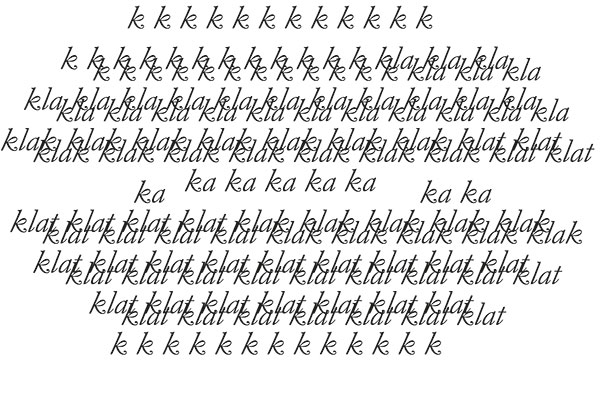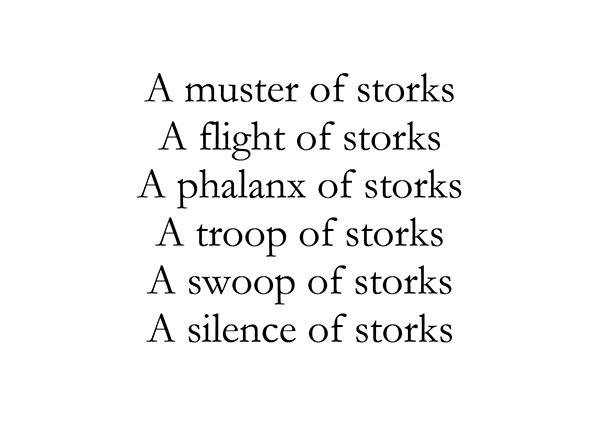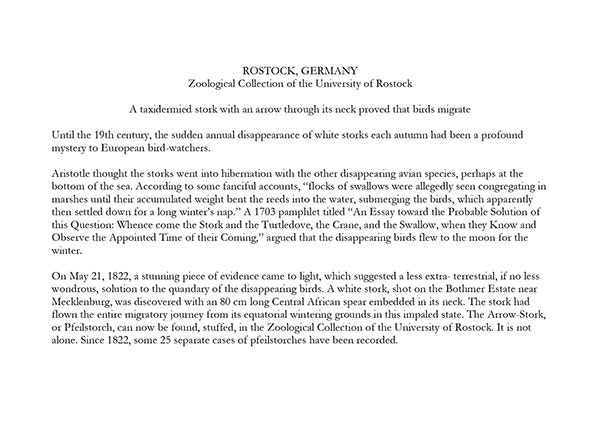| Artworks | Info |
Pfeilstorch (2018)
Three digital prints on paper, each 841mm x 594mm
as part of Speaking Volumes! Tungebundet! exhibition curated by Rikke Hansen and Tanja Nellemann
12-26 October 2018
Kaunas Artist’s House V. Putvinskio g. 56, Kaunas Lithuania
Artists/writers in the exhibition are: Catherine Clover (UK/AU), Marija Gruniuk (LT/DK), Lise Haurum (DK), Mads Mygind (DK), Louise Vind Nielsen (D/DK), Tanja Nellemann (DK), Søren Krag (NO/DK) and Rikke Hansen (DK).
SPEAKING VOLUMES! / TUNGEBUNDET asks the question: To whom does a voice belong? We speak of the need to ‘find one’s voice’ as if it was moving restlessly about in the room, waiting for someone to claim ownership over it. In a religious sense, there is also an understanding that a divine voice might take over a body, causing the subject to ‘speak in tongues’ (glossolalia). At the same time, the term for voting in Germanic languages is ‘voicing’. To lose one’s voice is to lose one’s right to political representation. So what about those subject who have not traditionally been seen as having a voice? Does an animal have a voice?

The print is a transcription of two White Storks greeting each other with bill clattering on the nest. It is taken from an audio recording contributed to Xeno Canto, a web site dedicated to the sharing of bird sounds by the general public from around the world. The recording was made by Lars Lachmann in 2009. It is 15 seconds long and recorded in Kuligow, Mazowieckie region, Poland.

A huge variety of collective nouns, particularly for groupings of birds, are a characteristic of the English language. These collective nouns refer to behavior we observe, and for the storks most of this behaviour concerns flight. However, the last collective noun in the list in the second print refers to how storks communicate. Most birds have a syrinx (a vocal organ that is like a double or dual version of our larynx) but emus, ostriches, storks, and vultures do not. While birds without a syrinx may not make a sound with their throat, they use other means instead, hence the bill clattering of the storks.

The White Stork, Baltasis Gandras in Lithuanian and Ciconia Ciconia in Latin, is the national symbol of Lithuania. It is the bird that was pivotal to the European discovery of bird migration in the early 1800s. The third print in this series describes what happened:
Zoological Collection of the University of Rostock
A taxidermied stork with an arrow through its neck proved that birds migrate.
Until the 19th century, the sudden annual disappearance of white storks each autumn had been a profound mystery to European bird-watchers. Aristotle thought the storks went into hibernation with the other disappearing avian species, perhaps at the bottom of the sea. According to some fanciful accounts, “flocks of swallows were allegedly seen congregating in marshes until their accumulated weight bent the reeds into the water, submerging the birds, which apparently then settled down for a long winter’s nap.” A 1703 pamphlet titled “An Essay toward the Probable Solution of this Question: Whence come the Stork and the Turtledove, the Crane, and the Swallow, when they Know and Observe the Appointed Time of their Coming,” argued that the disappearing birds flew to the moon for the winter.
On May 21, 1822, a stunning piece of evidence came to light, which suggested a less extra- terrestrial, if no less wondrous, solution to the quandary of the disappearing birds. A white stork, shot on the Bothmer Estate near Mecklenburg, was discovered with an 80 cm long Central African spear embedded in its neck. The stork had flown the entire migratory journey from its equatorial wintering grounds in this impaled state. The Arrow-Stork, or Pfeilstorch, can now be found, stuffed, in the Zoological Collection of the University of Rostock. It is not alone. Since 1822, some 25 separate cases of pfeilstorches have been recorded.
| Artworks | Info |